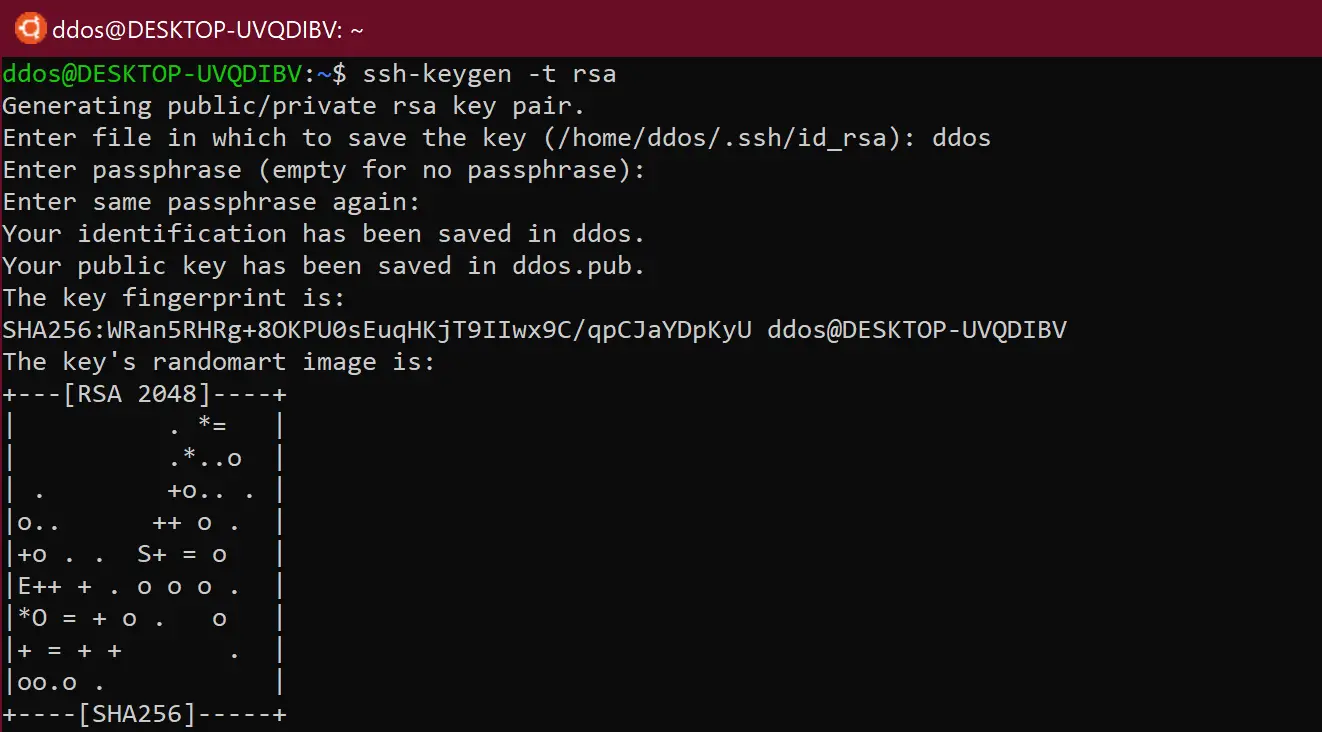
You have generated the SSH key for this host. You won't see those entries in your terminal window. SHA256:XWk+zJ5Kphe/sT78yg1jLdQCybN4dE2o52eOihEuwPo key's randomart image is:Īccept the defaults by pressing the ENTER key three times to continue as shown above. Your public key has been saved in /root/.ssh/id_rsa.pub. Your identification has been saved in /root/.ssh/id_rsa. $ ssh-keygenĮnter file in which to save the key (/root/.ssh/id_rsa): Įnter passphrase (empty for no passphrase): Login to host1 and issue the following command to generate the SSH key. The table below might be a clearer way of presenting this scenario. Actually, this step is optional, but to make your life easier, I recommend that you perform it.įor the sake of simplicity in this example, we have three systems: host1, host2, and host3 that use IP addresses 10.10.1.50, 10.10.1.60, and 10.10.1.70, respectively. Cheat sheet: Old Linux commands and their modern replacementsīefore you can perform this magical wonder, you must prepare your systems to use SSH keys between them.Linux system administration skills assessment.A guide to installing applications on Linux.
Ssh copy key command download#
Download RHEL 9 at no charge through the Red Hat Developer program.On success, you are going to be connected to your remote host.Ĭongratulations! You successfully set up SSH key-based authentication for your servers. Enter passphrase for key '/home/user/.ssh/id_rsa' If you defined a passphrase in the previous sections, you will be asked to provide it now. The authenticity of host '142.93.103.142' can't be established. This is a paragraph that you already saw when you were trying to copy your SSH keys to your client host. On the first connection, you should be prompted to validate the identity of your server. To do it, perform a normal SSH connection, like you used to do in the past. Now that everything is ready, you need to connect to your server using key-based SSH authentication. Now that everything is ready, and that your SSH keys are set up, it is time for you to connect to your host using your keys. Save your file and exit your text editor. ssh directory, let’s see the files created. Now try logging into the machine, with: "ssh ' '" and check to make sure that only the key(s) you wanted were added. As a result, you should see the following output.
Ssh copy key command password#
The authenticity of host '142.93.103.142' can't be established.ĮCDSA key fingerprint is SHA256:/KdeEfkcNce332KdLPqadkKaPapvcN32.Īre you sure you want to continue connecting (yes/no)? yesįinally, you will be asked to provide the password the remote user. You may be prompted with the following question. To run ssh-copy-id, execute the following command. If your SSH keys are compromised, there are essentially no benefits in using a secure protocol like SSH.Īs a consequence, here’s how you should copy your SSH keys to remote hosts. In order to copy your newly created SSH key, you should not use an unsecure protocol (like TCP for example) as it would expose your SSH keys to hackers. This is the file that you are allowed to share with clients.Ģ – Copy the SSH public key to your client host This is the PUBLIC key that is going to be used by clients to connect to the server. id_rsa.pub: the “pub” extension stands for “public”.It is also used by the client to verify the server’s identity. It should obviously not be shared with anybody. id_rsa: this is the PRIVATE key that is going to be used on the server side to identify incoming client requests.Passphrases are recommended for production and sensitive environments.Įnter your passphrase again, and your SSH key should be created.Īs a result of your command, two files were created. Password authentication will be disabled in the next chapters, but you will still be prompted with the passphrase if you decided to define one.


If you want to automatically connect to your server without being prompted any password, leave the passphrase blank. In case somebody steals your key, the passphrase will be required as a second security option. Enter passphrase (empty for no passphrase)Ĭhoose a strong passphrase for your key. You can leave this one as default, except if you want to store it in a custom key file. Generating public/private rsa key pair.Įnter file in which to save the key (/home/user/.ssh/id_rsa): When creating your SSH keys, you will be asked a number of questions. In general, you want to use at least 2048 bytes for a key, but we are going to use 4096 in our case.įinally, the -C flag provides a comment for the key pair, in this case the e-mail used. The -b determines the number of bytes used to create your key. The -t flag specifies the type of encryption used (in this case RSA). This ssh-keygen will take care of creating your key. To create a SSH key pair, use the following command. In order to generate a SSH key on Debian, you are going to need the ssh-keygen tool.īy default, ssh-keygen is already installed on Debian 10.


 0 kommentar(er)
0 kommentar(er)
